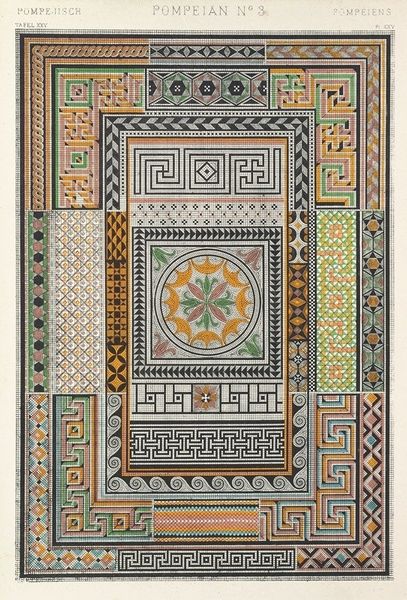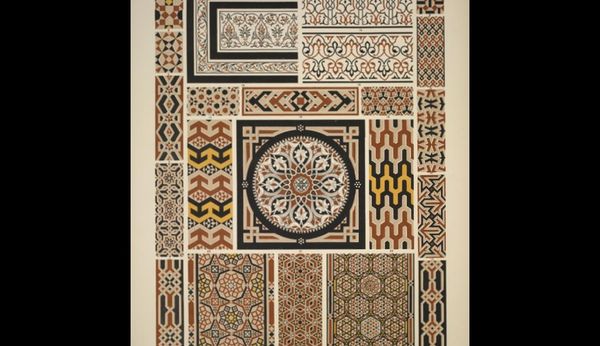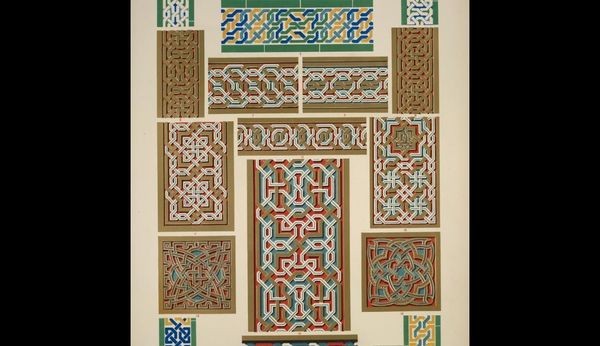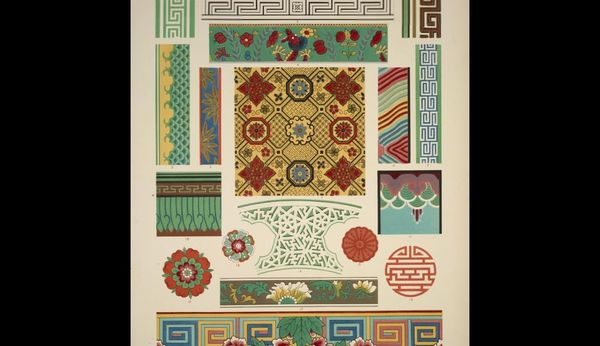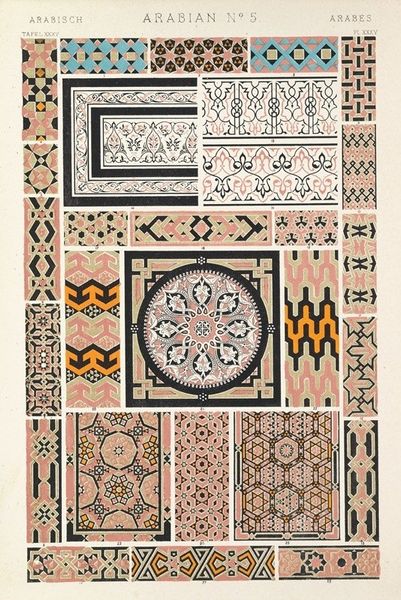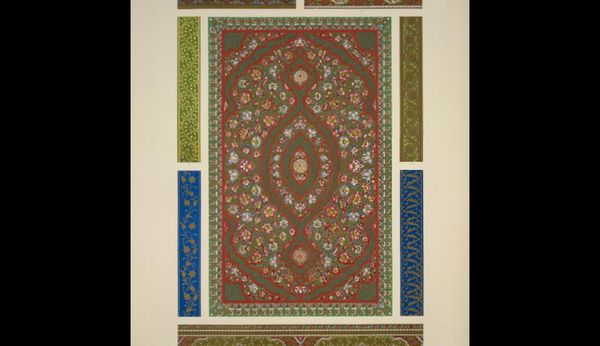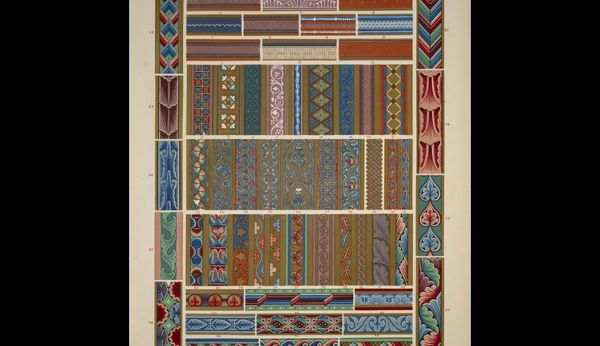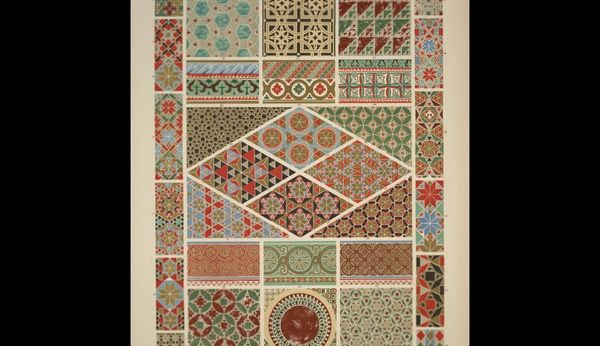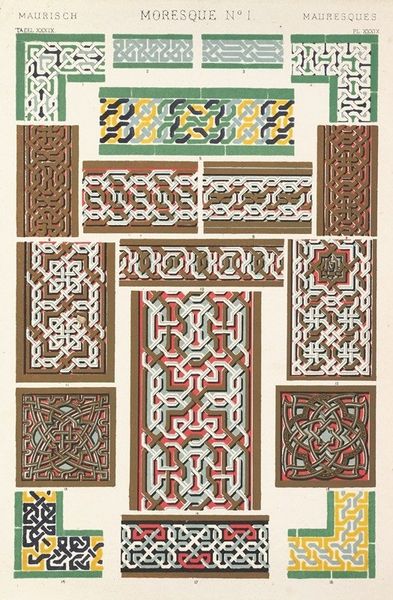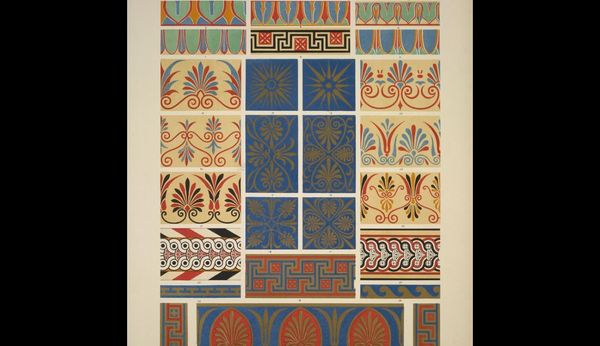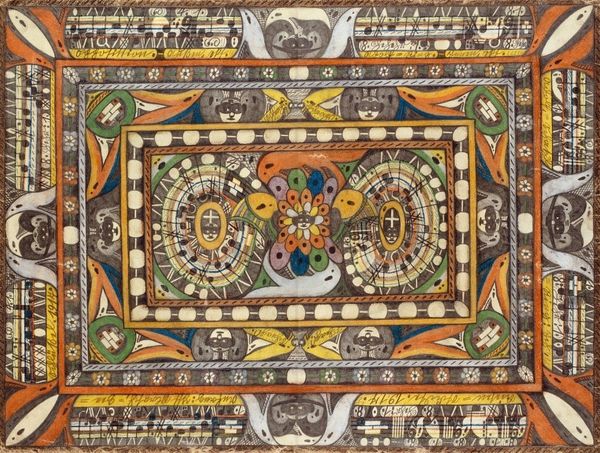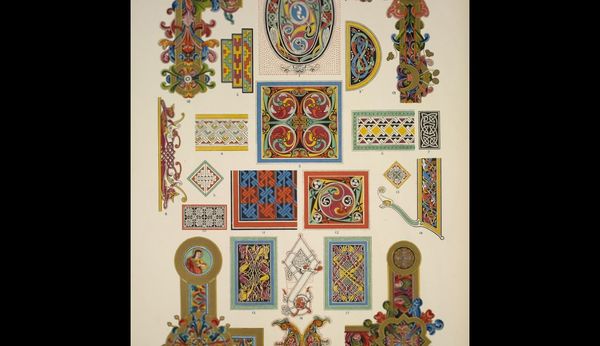
mosaic, print
#
mosaic
# print
#
geometric pattern
#
geometric
#
ancient-mediterranean
#
decorative-art
#
repetitive pattern
Copyright: Public domain
Curator: Here we have "Pompeian no. 3. Mosaics from Pompeii and the museum at Naples", a print by Owen Jones. What’s grabbing your attention? Editor: Well, right away, it's the geometry of it all! It feels incredibly orderly, almost like a mathematical equation translated into art. There’s something grounding in seeing such meticulous pattern work. Curator: Jones's prints were meant to make accessible the aesthetics and decorative motifs of the ancient world. The 19th-century fascination with antiquity definitely influenced his work and the wider cultural landscape, particularly through the Victorian era’s embrace of ornamental design. Editor: Absolutely. But it’s more than just ornamental, isn’t it? Looking at the mosaics—extracted and displayed—brings up questions of cultural ownership and how we, even now, are impacted by decisions made in how antiquities get showcased. Who decided which mosaic patterns were "worthy" of reproduction? Curator: A valid point. This print reflects how institutions actively shaped, and to some degree, codified certain interpretations of antiquity for a public audience. By showcasing these geometric patterns, it validated classical aesthetics. It influenced generations of designers. Editor: And I wonder what narratives were erased or never amplified because they didn’t fit this curated, Western-centric ideal. Those tight repeated shapes—I start feeling the potential for oppression and conformity. What was considered beautiful, acceptable, safe to display. Curator: Yes, we need to remember that this aesthetic didn't develop in a vacuum. These mosaic patterns represented power structures. It's not just decoration, it's an imprint of the values of those times. Editor: Precisely. Art and these artifacts can act as powerful reminders that our own cultural choices carry similar weight. Every image selected, amplified, and exhibited reflects an implicit point of view that helps build cultural and even political frameworks. Curator: It seems like revisiting “Pompeian no. 3” with your perspective highlights just how resonant these historic aesthetic selections remain and what these may mean for our contemporary visual landscape. Editor: Hopefully our conversation serves to help broaden this exploration, especially as it pertains to equity and accessibility of diverse perspectives.
Comments
No comments
Be the first to comment and join the conversation on the ultimate creative platform.
